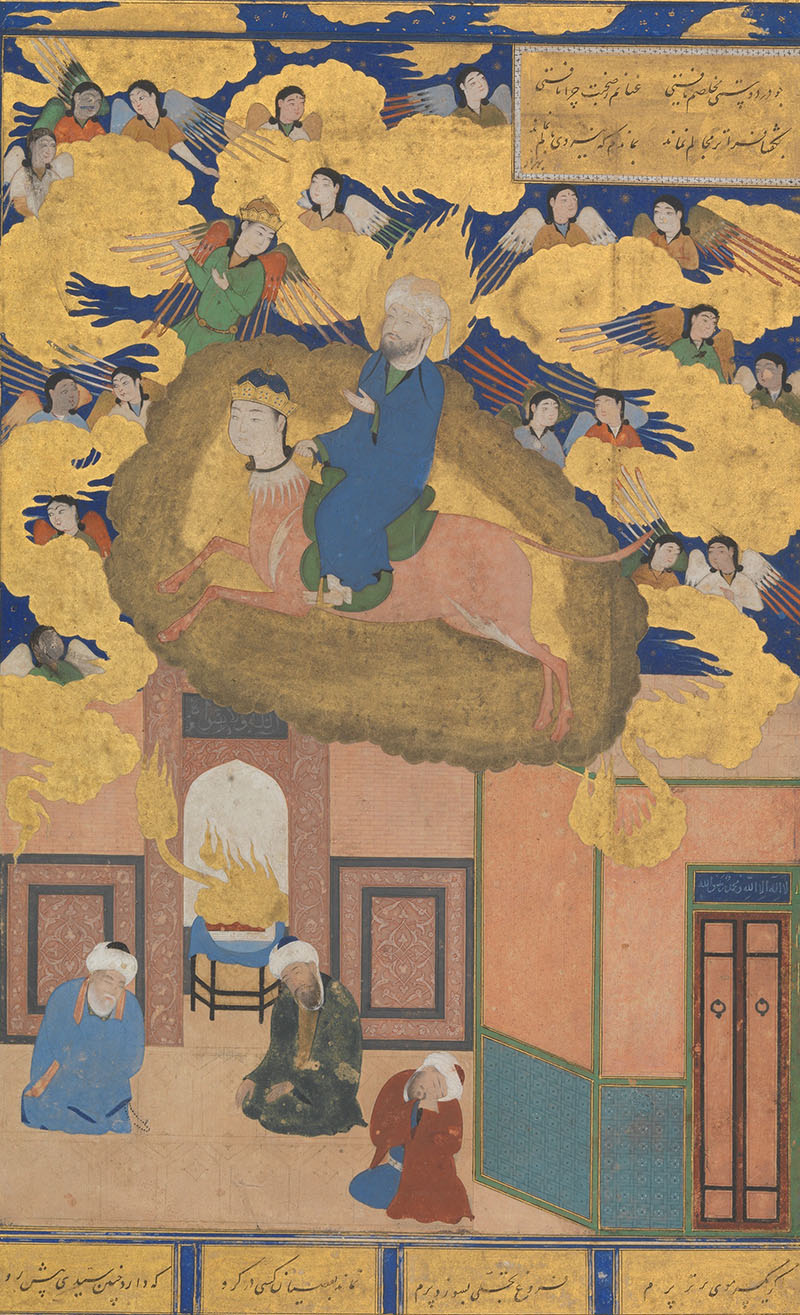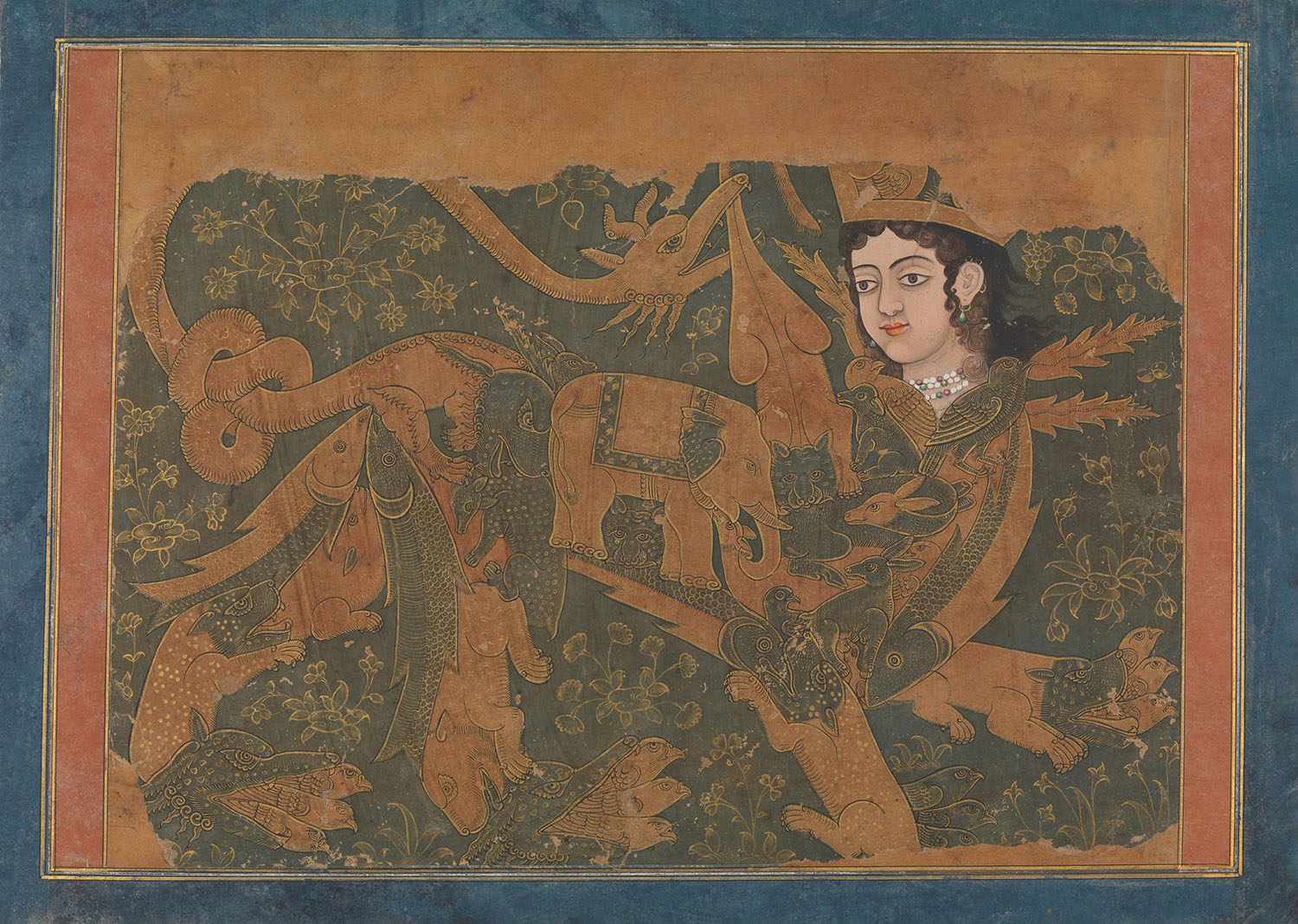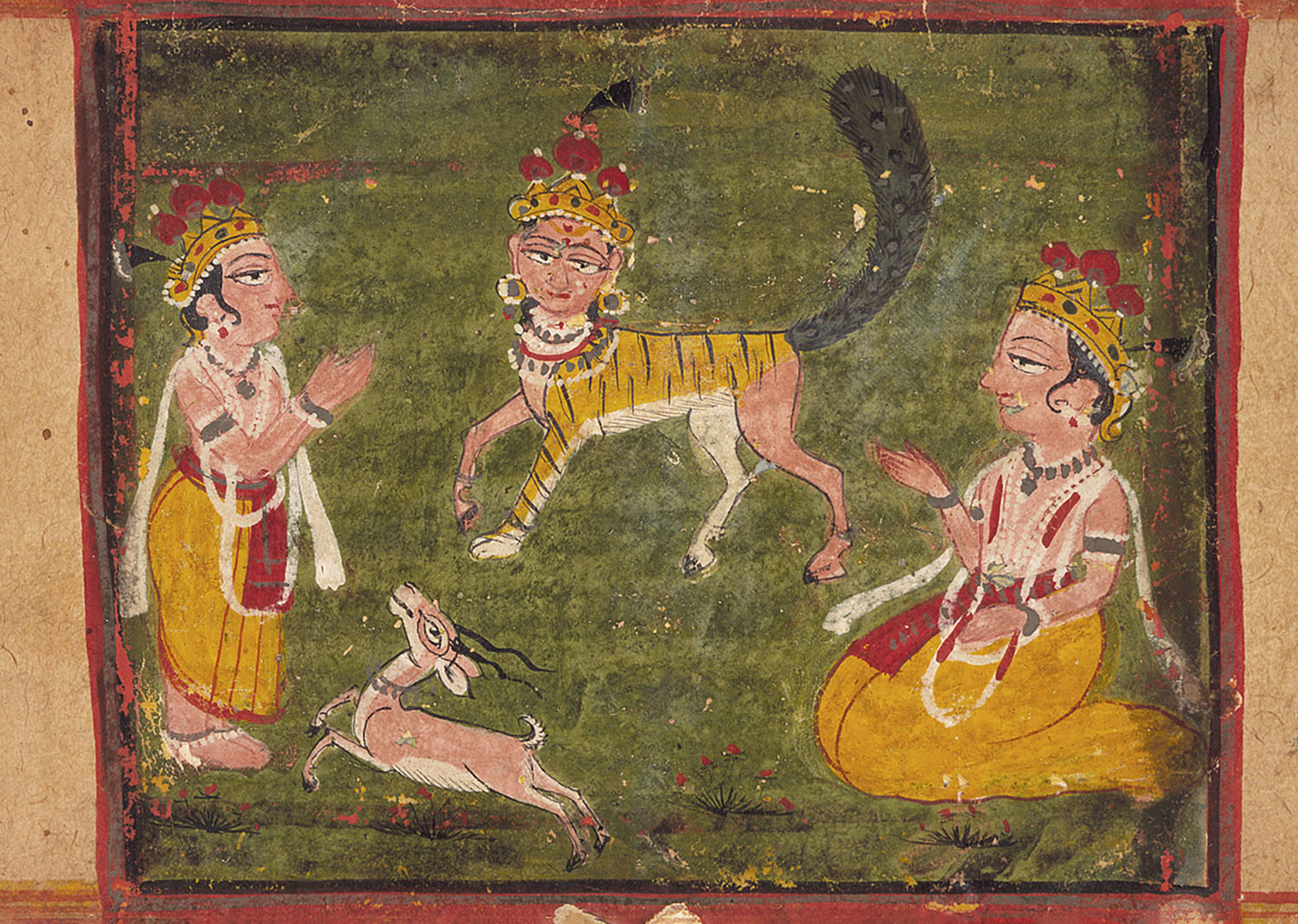A mythological creature with the head of a human and the body of a horse, the Buraq is closely associated with the Prophet Muhammad in Islamic mythology. While the exact details of their interactions vary over time and place, most hadiths consistently describe the Prophet as riding the Buraq during his night journey from Mecca to Jerusalem, an event known as the isra. In some legends, the Prophet goes on to ride the Buraq through the seven heavens after the isra; in others, he ties it to the wall of a mosque before his ascension. The Buraq is also sometimes depicted as the vehicle of other Prophets in the Islamic tradition, such as Abraham.
The name “buraq” is believed to have been derived from the Arabic word bariq, meaning “shine” or “brilliance”. Some Islamic commentators have also suggested that the name is derived from the word barq (“lightning”), referring to the creature’s speed. While the Buraq is not explicitly mentioned in the Qu’ran, descriptions of the Buraq can be found in ibn Ishaq’s eighth-century biography of the Prophet. This and other early traditions emphasise the creature’s horse-like features, including hooves, long ears, and long back. The Buraq seems to have originally been described as male, but texts from the ninth century onwards describe it as female. The first textual mentions of human facial features begin to appear from the eleventh century CE.
It is unclear when the Buraq first began to be portrayed in visual art. However, a profusion of depictions survive in Persian manuscript paintings from the late mediaeval period, suggesting the legend and iconography were firmly established around that time. Images depicting the Buraq can also be found in South Asian manuscripts depicting the isra, such as the Mi’ragnama (1436) from Herat (modern-day Afghanistan). The Buraq is the subject of manuscript paintings such as The Fabulous Creature Buraq (1660–80) from Golconda, rendered in the Bijapur style, and The Buraq Worshipped by Two Princes (nineteenth century) from Kashmir.








![The façade of the Maneckji Seth Agiary, a Zoroastrian fire temple, is a standout example of the popularity of the Persian Revival Style in Western India in the 19th and 20th centuries. This style was often seen in the architectural patronage of the Parsis, who emerged as one of the most influential mercantile communities of British India. Popular motifs of this style, like the mythical lamasus (winged bulls with human heads) and the faravahar (a winged guardian spirit in Zoroastrianism), drew on the historical art and architecture of the Achaemenid and Sasanian empires from sites like Persepolis, Bisotun, Taq-e Bostan, Naqsh-e Rostam and Naqsh-e Rajab in Persia.
The Parsi community’s adoption of this style occurred largely due to their networks of global commerce and politics, allowing them to access and translate research of ancient Persia into visible symbols that underlined their association with antiquity, imperial power, and art.
نمای آتشکدهی زرتشتی مانِکجی سِت نمونهی بارزی از رواج سبک «احیای [معماری] ایرانی» در غرب هند طی سدههای نوزدهم و بیستم است. این سبک غالباً در بناهایی دیده میشد که پارسیان، از بانفوذترین جوامع بازرگان در هند بریتانیا، بانیشان بودند. نقشمایههای محبوب این سبک، مانند گاو بالدار اساطیری (لاماسو) و فَروَهَر (روح بالدار نگهبان در دین زرتشت)، برگرفته از هنر و معماری شاهنشاهی هخامنشی و ساسانی، در جاهایی چون تخت جمشید و بیستون و طاق بستان و نقش رستم و نقش رجب، بود.
اقتباس جامعهی پارسیان از این سبک بسیار مرهون روابط گستردهی تجاری و سیاسی آنها بود که دسترس به پژوهشها دربارهی ایران باستان و برگردانیدن آنها به نمادهای بصری را ممکن میکرد و بر پیوند پارسیان با دوران باستان و قدرت شاهنشاهی و هنر تأکید میکرد.](https://mapacademy.io/wp-content/plugins/instagram-feed/img/placeholder.png)
